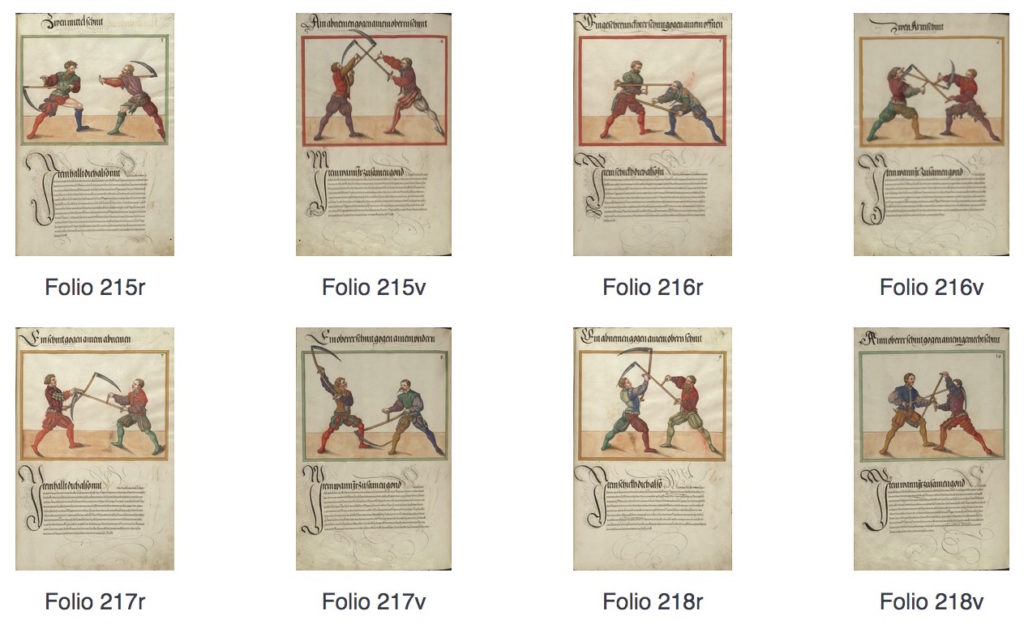I recently came across one of the cooler martial arts videos I’ve seen in a while.
In this video a couple of Dutch Historical European Martial Arts practitioners demonstrate scythe techniques. The techniques they’re showing come from German martial arts manual written in the 1500’s.
The large hooked blade, very pointy tip, and offset handles make the scythe a very interesting weapon that functions quite differently from ‘regular’ weapons. The circular strikes, the hooking motions, and the distance the tip of the blade protrudes past the shaft would make this a very tricky weapon to use.
I’d sure want to have practiced with one a few times before my first scythe fight!!
Check it out – if you’re interested in martial arts I guarantee this is going to be worth it…
Scythes in Battle
Now does any of this mean that knights were ditching their longswords and spears and picking up agricultural scythes when they went off to war? Is this kind of scythe an efficient tool in a battle?
Probably not.
As discussed here the blade of this kind of tool both offset from the main axis of the handle and is only sharp on the inside, making it hard to cut with it except by hooking around your opponent first. That’s why the ‘war scythe‘ doesn’t have the same shape and has much more in common with halberds and pole axes.
On the other hand peasant rebellions are common in history, so I’m sure that more than one landowner got his head shaved with an agricultural scythe in the early stages of a revolt before it was brutally put down.

Improvised Weapons
That being said, would you rather have an agricultural scythe in your hands or nothing? It’s a long, sharp, pointy object: so of course you’d take it!
Improvised weapons are part of human nature. If a man in 2017 used a plastic light saber to defend himself against a knife then of course a peasant in 1517 would have used a scythe to settle a dispute with a neighbour.
The late middle ages were violent, and people would have used any tool they had to dispatch their enemies.
I know most of you don’t habitually walk around with scythes, but this discussion does illustrate the importance of keeping an eye out for things you could use as a weapon if s**t went south.
In every room, store, street and alley there’s surely something you could use if you had to.
De Arte Atheletica and the Historical European Martial Arts
Historical European Martial Arts (or HEMA) are probably what I’ve neglected most in my own training. This omission is purely out of lack of time rather than lack of interest.
People have done an amazing amount of research using books, reenactments, competitions and other methods to figure out what medieval combat probably looked like.
There are some pretty amazing books from that time. but the one from which these scythe techniques come – De Arte Athletica, by Paulus Hector Mairs – is among the best.
It took years to write and covers the longsword, the cutlass (dussack), pike, halebard, scythe, flail, stick, sickle, dagger, rapier, poleax, grappling and more.
Paulus Hector Mairs, a fencing master from Augsburg, compiled De Arte Athletica at great personal cost for the benefit of future generations. Incidentally he was hung as a thief for embezzling money for the city treasury and at least some of the money he misappropriated went to pay for this book, so check it out.
If you’re interested you can look at the entire De Arte Athletica book here (as well as find out more about its history).
P.S. I occasionally enjoy taking an actual scythe to my backyard, mostly because it makes me feel much more badass than using a lawnmower. Occasionally it even results in an instagram post with a smart ass caption about how Scythefit ™ is going to be the next big fitness craze.
It was feedback to that post which led me to the scythe-fighting video at the top of this page, and then to the De Arte Athletica. Isn’t the internet an amazing place?

